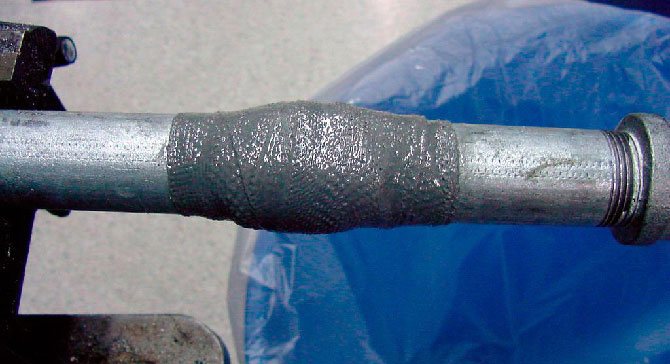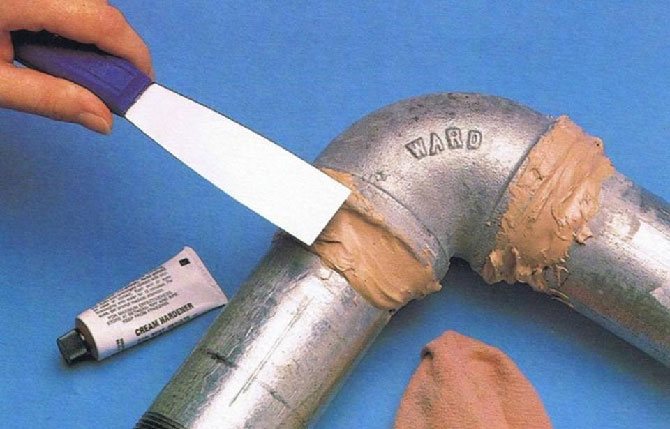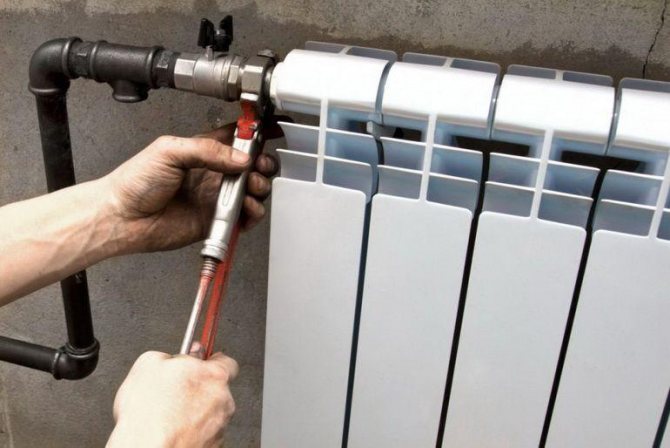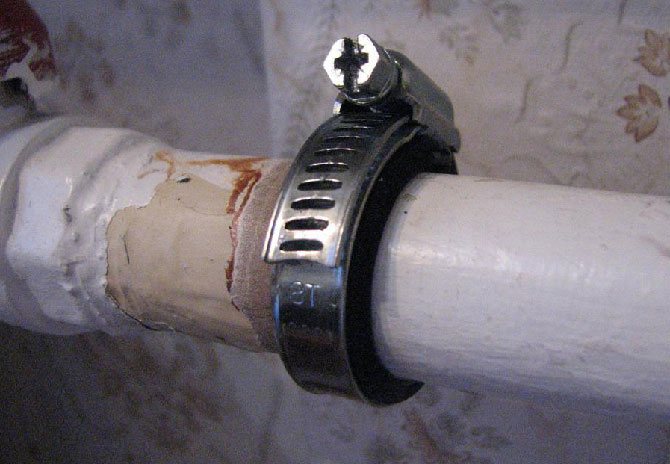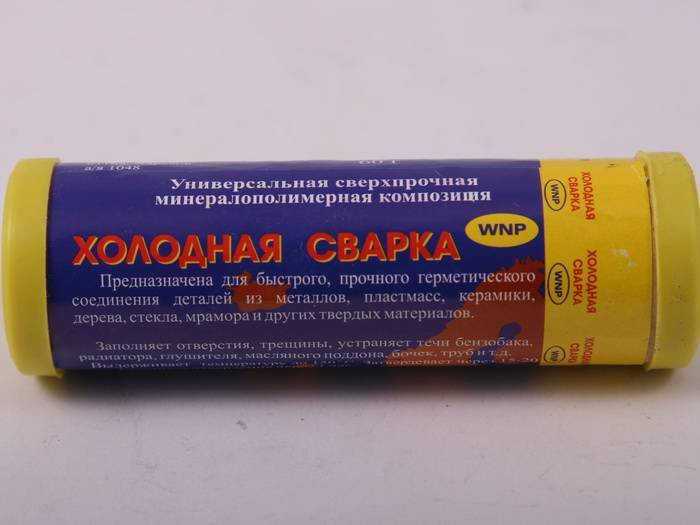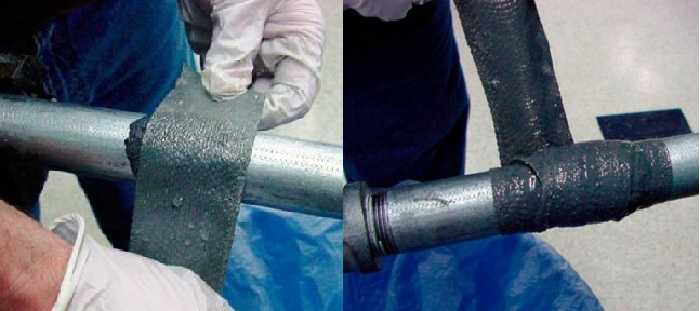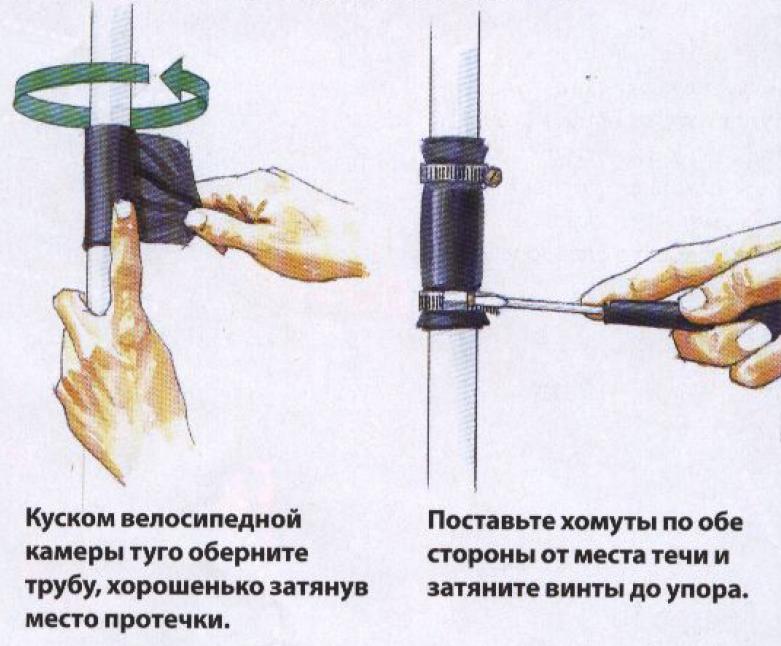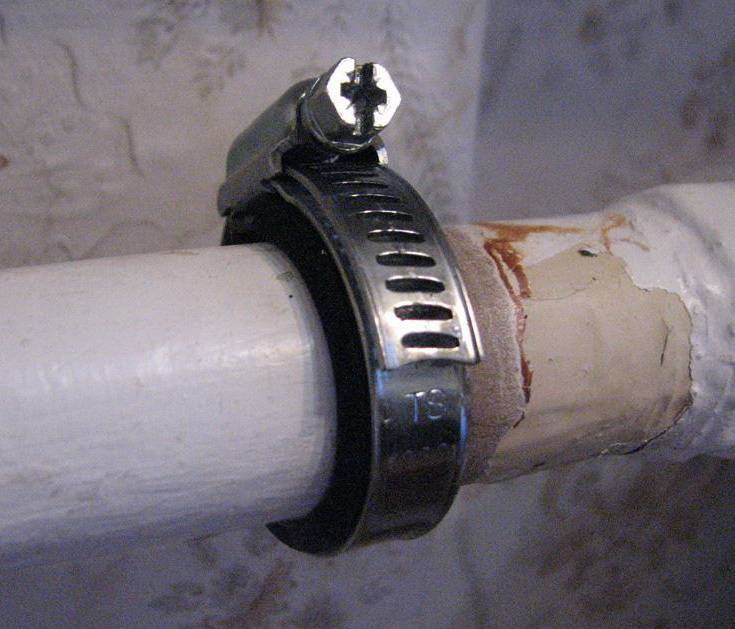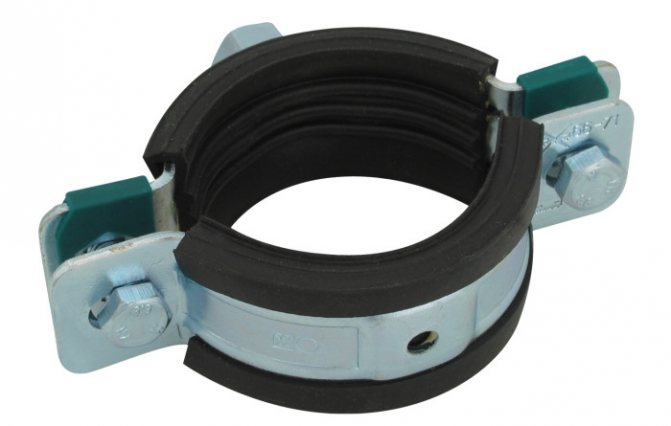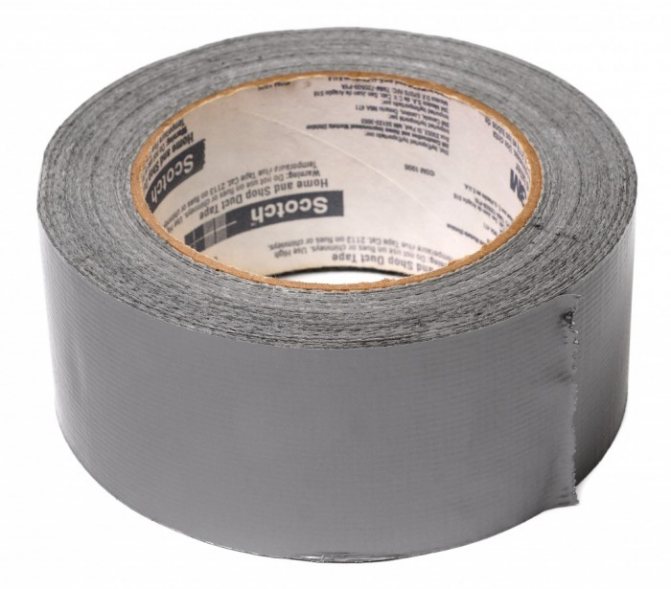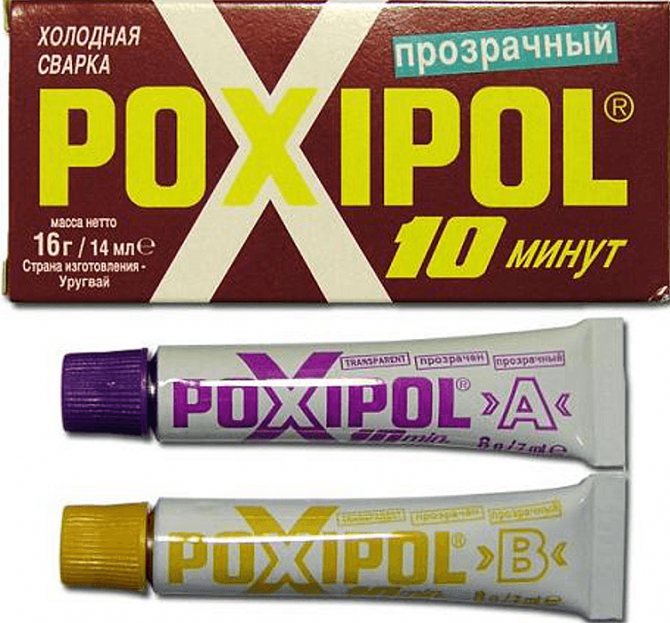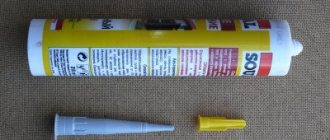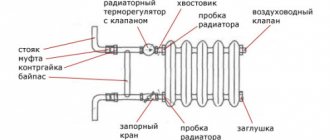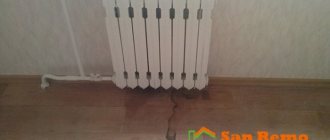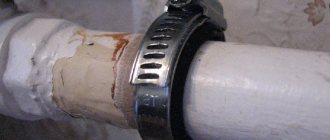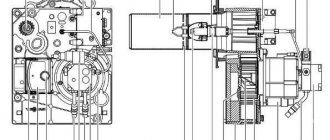Can this be done at all?
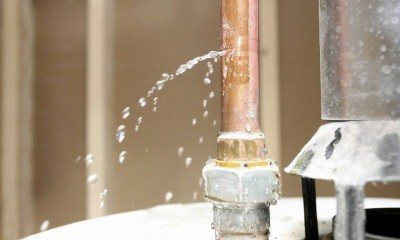
It is quite possible to patch up a pipe under pressure, which unexpectedly gave a leak, on your own using improvised means.
The only caveat is if the leak is minor, and the water oozes slightly, and does not gush in an endless stream.
When the accident is more serious, you will need to urgently tighten the valve that controls the water supply to the coolant, and then call the repair service.
Where to call if the pipe is leaking
In the event of a break in the water supply, heating or sewerage communications, it is necessary to contact the housing department to call a plumber (locksmith), or to the emergency service. Telephone numbers of service organizations can be found in the information desk, on the notice board at the entrance to an apartment building, or on receipts for utilities.
If the impulse occurred on a weekday during working hours, you need to call the housing department, the management company or directly the plumber assigned to a specific residential area. Outside working hours, at night or on weekends, you should contact the emergency service of the water utility. They will not do the work for the masters of the Criminal Code, but they will come to the place and cut off the water in the heating, water supply or sewerage system before the arrival of the masters of the housing department.
Material selection rules to fix the problem
When the cause of the damage to the pipe is established, it is necessary to look for acceptable ways of repair. There are several of them. Only most are suitable for low water pressure in the water supply circuit or heating system.
The most common way out of a difficult situation is to use an industrial clamp (tie). It is a metal ring with thick walls, rubberized inner surface and a fastening nut for a tie.
If such a device was not at hand, then any piece of rubber (for example, from a bicycle tube) and wire or something similar will do.
But other ways to eliminate leaks, when it comes to heating systems or hot water supply, are unlikely to work. So, often used cold welding and special sealants are not relevant for wet surfaces.
Other instantly hardening composites (epoxy resin, dichloroethane) are also excluded, since they can be used on dry and disconnected water supply lines.
Minor piping leaks can be repaired on your own... But this will only be a temporary measure. At the end of the heating season, it is recommended to undertake a major overhaul so that the system no longer malfunctions.
How to fix a pipe body leak
How to repair a leak in a pipe if there is a crack in the body? To eliminate the malfunction, you can use one of the following methods:
- install a clamp;
- apply a bandage;
- apply cold welding.
Clamp installation
The easiest way to fix a leak on a pipe body is to install a repair clamp. The special device consists of:
- metal case;
- a rubber seal located inside the body;
- fixing bolts.
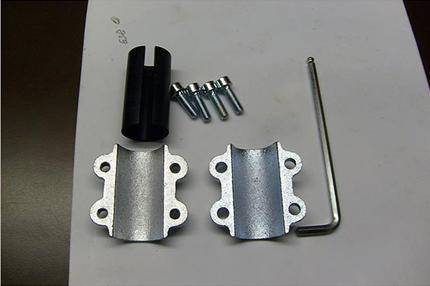

Special device for eliminating pipe leaks
You can install the clamp with your own hands in the following way:
- the place of the leak is cleaned of dust and rust;
- the pipe is wrapped with a clamp;
- the device is fixed.
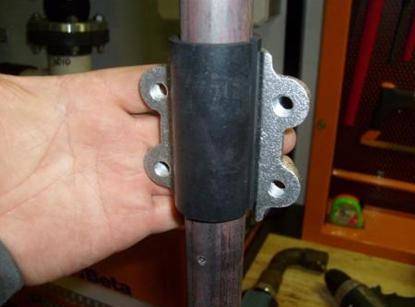

Elimination of leaks with a clamp
Applying a bandage
How to seal a leaking pipe if there is no clamp? To eliminate the leak, you can use a rubber, adhesive or cement bandage.
The rubber band is:
- a piece of rubber.A cut from a bicycle tube or medical tourniquet used to stop bleeding works best. It is necessary to wrap the cracked section of the pipe with a rubber cut;
- small straps, wire or other fixing straps to secure the rubber to the pipe.
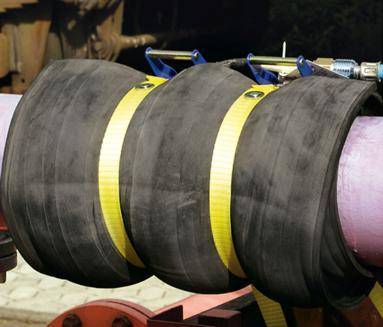

Bandage for pipes made of scrap materials
The adhesive bandage is installed according to the following scheme:
- the section of the pipe on which a leak has formed is cleaned of dirt with a solvent;
- fiberglass or medical bandage are impregnated with special glue;
Special formulation to eliminate leaks
- the pipe is wrapped with prepared material in several layers;
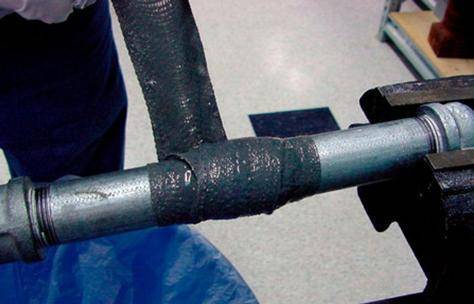

Installing an adhesive bandage in place of a leak
How to cover a current pipe with epoxy, see the video.
Cement bandage is analogous to adhesive bandage. A bandage or fiberglass is impregnated with a cement mortar prepared in a ratio of 1:10.
Cold welding of pipes
A relatively new way to eliminate leaks is the use of a composition of the so-called cold welding. How to cover the pipe so that it does not flow? For different types of pipes (metal, plastic, metal-plastic, etc.), different cold welding compositions are used.
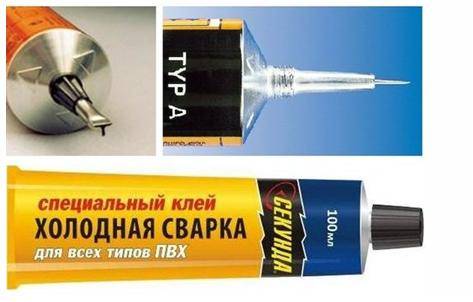

Composition for plastic pipes of various types
Detailed instructions for using the mixture are given on the bottle with the active substance. Here is a general algorithm:
- before applying the mixture, the damaged section of the pipeline is cleaned of dirt. If the composition must be applied to a metal pipe, then the crack is additionally cleaned of paint and rust;
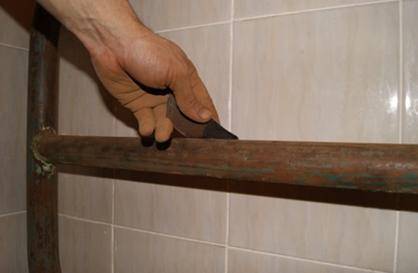

Stripping the pipe before cold welding
- a special composition is applied to the damaged area. If liquid cold welding is used in the form of glue, then it is advisable to apply it with a brush. If a plasticine-like composition is used, then before application it is necessary to knead it thoroughly until a homogeneous mixture is obtained;
- the substance for cold welding is evenly distributed over the entire section of the cracked pipeline, capturing 3-4 cm more than the crack itself;
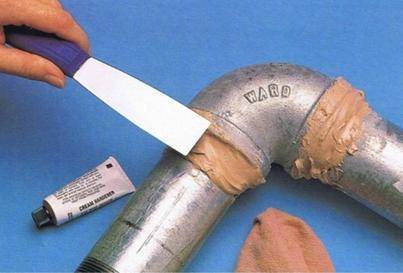

Coating the damaged area with a cold welding agent
- the composition is left to dry completely, which takes an average of 2.5 - 3 hours.
All the methods given in the article to eliminate leaks on the pipe body, except for the use of cold welding, are only a temporary measure. To completely get rid of the problem that has arisen, it is necessary to completely replace the damaged section of the pipeline. To carry out this operation, it is advisable to involve qualified specialists.
Hot and cold H2O - is there a difference in how to seal the gap?
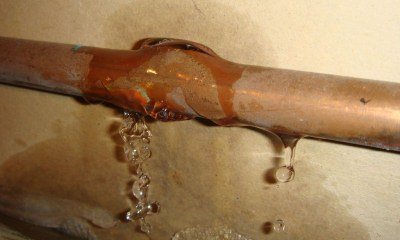

It's all about the difference in temperature of the coolant. It is this factor that decides when choosing a material.
With hot pressure, minor damage can be tightened without third-party intervention... Larger gaps can be easily leveled with regular salt and bandage.
But when the water cools down, the flow will resume. In the cold water pipe, it will not be possible to eliminate the leak with salt and a bandage. It is easier to repair a failed DHW pipe in the summer, when it is turned off. Then there is no need to control the temperature in the room while eliminating the leak.
How does the material of the pipeline affect the solution of the problem?
Metal pipes are distinguished by enviable resistance and durability. Almost their only drawback is their susceptibility to corrosion. This is what often becomes the cause of a leak in the circuit.
Less often, but other pipelines also fail: plastic, polypropylene (mainly in places of threaded or fitting interface).
The most difficult to terminate are metal pipes, since electric welding is not applicable to them.After such an impact, corrosive processes only intensify.
It is enough to compress the plastic pipe in the problem area, and all manipulations can be carried out under water pressure. The main thing is not to overdo it with the screed, otherwise the plastic will crack, and then you will have to change the whole pipe.
Polypropylene pipeline is easily repaired by soldering a separate fragment, from metal-plastic - inserts are needed... In the latter case, if the damage is not large-scale, winding with electrical tape or processing with an adhesive (polyurethane, epoxy) will be enough.
Sealing leaks at joints
The leak at the joints of the heating circuit can be sealed in the following ways:
- Install a classic clamping clamp, having previously eliminated irregularities with additional rubber bands.
- Close up the leak at the joint by wrapping several layers of impregnated elastic fabric around it. As an impregnation, you can use waterproof adhesives or ordinary nitro enamel.
- Minor damage can be repaired with baking soda and glue-moment. Lightly moistened baking soda is rubbed into a crevice or fistula so that it fills the entire space. Super glue is poured on top. Substances instantly react with each other, forming a strong plug.
We recommend that you familiarize yourself with: Self-installation of a samovar-type heat exchanger on the chimney pipe
It is convenient, just in case, to have a ready-made kit for local repair of the Siloplast type at home. The kit includes an acrylic fistula pad and a specially impregnated leak seal tape. It is enough to wind it around the pipe and moisten it with water. For such a repair, it is not required to drain the water from the heating system.
Note! High-quality repair of threaded connections requires mandatory dismantling and diagnostics.
How to solve the problem?
When water circulates in the pipes under pressure, then most major repairs are not possible to do. Therefore, it is necessary to act in other available ways in order to at least temporarily suspend the leak and wait for the emergency service.
Using a self-tapping screw
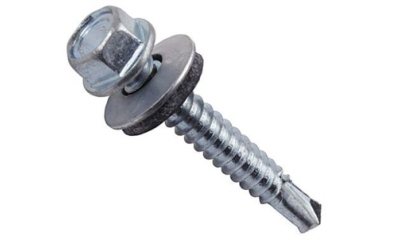

The the option is applicable only for minor gaps with a diameter of no more than 3-4 mm.
To block the hole, a galvanized self-tapping screw is needed, which is additionally equipped with a press washer.
They just screw it into the hole and fix it.... As a result, the water is cut off. After such a repair, the pipe can last up to 3 years, but it is better to change the burst fragment as soon as possible. In addition, a self-tapping screw inside the pipeline leads to clogging of the system.
Cementing
Cast iron or steel pipes can be easily patched up using cementing.
The sequence of actions is as follows:
- With a special hard brush for metal, carefully remove the rust layer in the fistula area. The paintable metal is also removed, even if this leads to an enlargement of the hole.
- Cut the bandage to a certain length and dip it into the cement solution.
- They wrap a crack with it in several passes to form a kind of cocoon.
- Cover with cement on top to consolidate the result.
After completing the repair work, the pipe must be given time to dry completely. Usually a day is enough.
Clamp
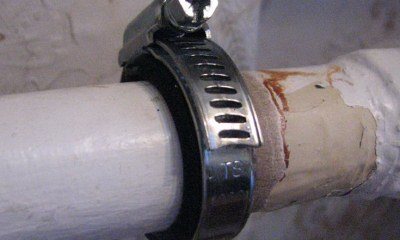

A clamp is understood as a fairly simple structure consisting of a metal ring, a rubber gasket and a tightening bolt.
Such a device is sold in stores, but in emergency situations, you can quickly make it yourself. You will need a piece of plastic rubber, scissors and a metal clamp that matches the diameter of the pipe.
Next steps:
- clean the area of damage from rust;
- put on a collar, and a rubber gasket is slipped under it;
- the clutch is tightly squeezed.
If the pipe is very rusty, the clamp will be almost the only way to disguise the leak. This is because welding cannot be used here.
Bandage and table salt
The salt is ideal for sealing leaks on pressurized hot water pipes. Step-by-step instruction:
- Spread the digestive salt over the bandage, in as large a layer as possible.
- Wrap it around a hole, preferably more tightly.
After getting wet, the salt sets into a crust, which prevents the further flow of water. The method is not particularly convenient to implement, but it will work if nothing else is at hand.
Sealant
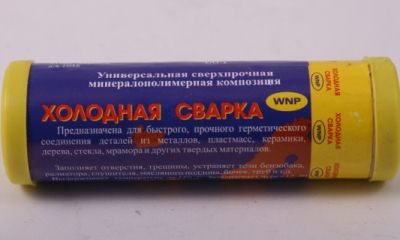

It is not productive to use a sealant (also called "cold welding") to eliminate leaks in existing pipelines, since there is no guarantee that the problem will be 100% solved.
This is because such formulations are designed to work on dry surfacesand condensation is present on the pipes under pressure.
But with a small crack, you can try to seal it with a heat-resistant sealant. Outwardly, it is similar to plasticine.
Split off a small piece, carefully crumple with your fingers and insert into the hole, followed by smearing on the sides... Large gaps will not work like this, you first need to insert a wooden chop.
Glue
Here you will need fiberglass cloth and BF-2 glue.
Step-by-step actions:
- the problem area is thoroughly cleaned of rusty particles and degreased with aviation gasoline (acetone will serve as an alternative);
- wait 15 minutes for the surface to dry;
- cut a tape of such a width from the fiberglass that it completely overlaps the leak;
- an adhesive composition is applied at the edges, and epoxy resin is applied to the center;
- applied to the crack, pressed by hand and wound;
- fixed with copper wire.
The patch will dry for about a day if the batteries are hot. In summer, when the room is cool, it takes about five days.
Wire or harness
A method somewhat reminiscent of the one with a clamp... Only instead of it they take a medical harness and any metal wire. The damaged pipe fragment is tightly wrapped with rubber and tightened with a wire.
Wooden chopik
It is necessary to quickly cut out a wedge-shaped peg of a suitable diameter from any piece of wood. Then they hammer it into the hole with a hammer.
Eliminate a leak in a heating pipe without draining water
How to proceed in this case if it is necessary to eliminate the leak? After all, in this case, cold welding will not help. There is a way out - this is the same "plug" that was discussed above. The material impregnated in the composition of the sealant is able to adhere even to a damp surface.
The mixture can be purchased at a hardware store. Wipe the pipe surface dry and then wrap the cloth with sealant. This method of repair helps with not strong digging.
If the leak in the pipe increases, then a piece of rubber is used as a temporary sealant. For example, cut to the required size from a bicycle or car camera. The piece should be with a margin.
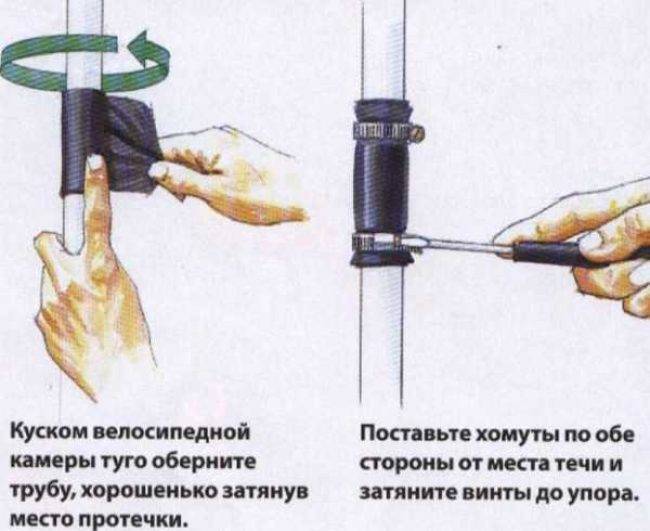

Wrap the prepared rubber tightly around the crack. For fixing, it is advisable to use one worm clamp or several pieces. You can use car clamps, which are designed to connect the pipes. Press down with a clamp and screw on the rubber gasket with a screwdriver. Such a simple method will help eliminate the leak or slightly reduce it.
You can buy ready-made pipe repair kits from the hardware store in the event of a leak. It includes a prepared clamp with a rubber gasket and a small valve. Thanks to him, it is possible to drain the accumulated water from under the clamp while the installation is taking place.
After the clamp is securely fixed, the valve closes tightly and the flow stops. Such kits for the repair of heating and other types of pipes help prevent an undesirable situation with a strong leak. Other means are unlikely to save.
In addition, if it is not possible to drain the water from the heating system, you can use another simple method. Using a special tool, dry and freeze the crack section of the pipe, and then glue it with glue or sealant.
The most relevant funds are "Apparatus Frost", "FRIZ PACK" and others. Such treatments contribute to the freezing of water in a damaged heating pipe. At this moment, in the damaged area, the water pressure decreases, which makes it possible to cut a piece of pipe and weld a new one. You can also put a "plug" on this area.
It should be understood that the methods given in our material to eliminate leaks in pipes using cold welding, sealant, adhesive, ready-made repair kits are just a temporary measure. Over time, the crack will begin to widen, rust can show itself again and the flow will resume.
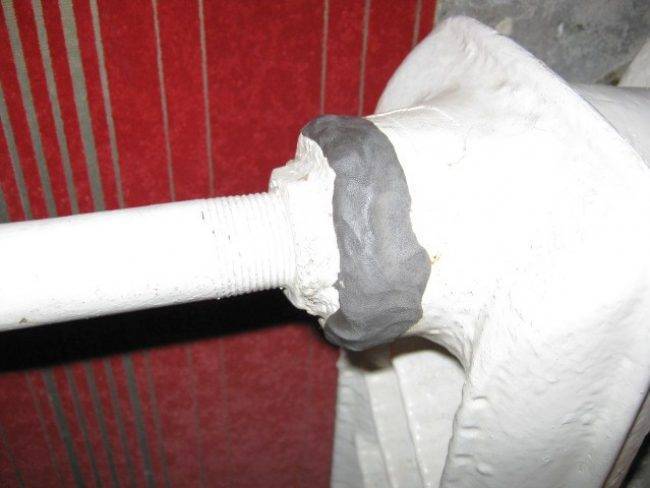

It is advisable to do a thorough repair of pipes in the summer, namely to drain the water and completely replace the area with a crack or rust. If this is not done, then unpleasant surprises can again be expected in winter. It is best to invite specialists for repair work.
How to stop a leak in a hidden pipe?
It will not be particularly pleasing when a pipe hidden under a building structure begins to leak. Moreover, if only recently renovations were made. Since it is not always possible to quickly reach the source, it is necessary to know how to temporarily stop the flow.
Here are a few tricks that are suitable for a water supply system in a private house:


Powdered mustard is poured into the expansion tank. Then the water circulation is resumed.
In just a couple of hours, the mustard will seal the microcracks from the inside of the pipeline. When the leak has been repaired, the circuit should be flushed.- The heating system is temporarily filled with an industrial sealant. It will settle on the inner surfaces of the pipeline and thereby stop water seepage through microscopic gaps. After a major overhaul, the coolant is changed to a new one.
Large holes cannot be repaired in this way. Then the system is turned off, the water is dumped from the riser and the straightening is started. Namely, it will be necessary to disassemble the structure and replace the problem spans. In case of living in an apartment building, neighbors are warned about the upcoming event.
Preventing the recurrence of the problem
It is easier to prevent malfunctions in the heating circuit than to suddenly look for ways to fix them. So before the start of the heating season, communications are checked by testing, especially focusing on hazardous areas.


These include:
- even spans;
- threaded connections and welds;
- area of joining of sections at radiators;
- places of implantation of heating equipment;
- near fittings;
- hard-to-reach areas.
First, everything is checked by eye, then - with a running contour.

